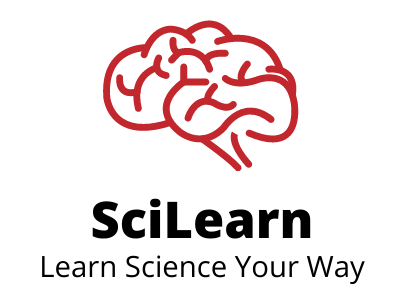Launched by the Faculty of Science in Fall 2020, SciLearn is a new way of helping incoming students make the transition to university study. The program draws on key concepts from neuroscience to guide students in identifying the learning strategies that work best for them. Born amid the COVID-19 pandemic, SciLearn also aimed to combat the isolation many faced when learning entirely online.
“We wanted to introduce students to the neuroscience of learning, but also make it really, really fun,” says Armin Yazdani, Educational Developer with the Office of Science Education (OSE), describing the challenge of designing an online program to help new students adapt to the demands of university study at a time when remote delivery might have left those very students wanting nothing less than an additional screen-time commitment.
Among the 100-plus students who signed up for the program’s debut, computer science student Kelly Gallacher saw one very practical reason to participate.
“What drew me to SciLearn was the potential to improve my grades – just learning how to learn better, especially in a situation like remote learning,” she says.
Neuroscience-driven approach inspires students
Marie Walker, a physiology student with a particular interest in neuroscience, was intrigued by the program’s self-reflective model, which saw students take an investigative approach to finding the learning strategies that worked best for them.
“The program description talked about how we were going to do our own research and analyze it through a neuroscience perspective,” Walker says.
 The enthusiasm SciLearn participants showed for the program’s neuroscience content came as something of a surprise for Yazdani, who holds a PhD in the discipline. When asked to describe his role in the program, he explains that, at first, he imagined he would be something of a sideline commentator – a neuroscience boffin holding up a plastic brain to his Zoom camera and sharing a few choice insights from the scientific literature, before crossing back to SciLearn co-facilitator, Christina Popescu.
The enthusiasm SciLearn participants showed for the program’s neuroscience content came as something of a surprise for Yazdani, who holds a PhD in the discipline. When asked to describe his role in the program, he explains that, at first, he imagined he would be something of a sideline commentator – a neuroscience boffin holding up a plastic brain to his Zoom camera and sharing a few choice insights from the scientific literature, before crossing back to SciLearn co-facilitator, Christina Popescu.
“Our approach to the neuroscience stuff was to show them some cool images, fMRIs, videos, that kind of thing, to inspire them and engage them in discussion,” Yazdani says. “We thought it would be fun, but they really liked that content, they craved the neuroscience aspect.”
Gallacher confirms that, at the end of the SciLearn program, a key takeaway was “understanding the importance of BDNF”. Wielding the abbreviation for ‘brain-derived neurotrophic factor’ with casual ease, Gallacher goes on to explain BDNF’s role in neurogenesis and reducing inflammation in the brain.
“There have been studies that show students who do 20 minutes of aerobic exercise two to three times per week get better grades,” she adds, before elaborating on the role of physical exercise in stimulating the body’s production of BDNF and the associated benefits to cognitive function.
Similarly, SciLearn participants learned about the impact of other lifestyle habits on academic success through neuroscience-based insights into how much better our brains can work when we get enough sleep, eat a healthy diet, meditate regularly, and make time for social activities outside of study.
Building connections
Delivered in the entirely remote context of the COVID-19 pandemic, an express aim of the SciLearn program was to help students build a sense of connection – a goal that can be challenging at the best of times in the hurly-burly of a first year at university.
Alberto Lopez, a freshman student aiming to major in cognitive science, found the interpersonal aspect of the program especially valuable.
“What I appreciated about SciLearn, besides the interesting content, was the small community feeling,” he says. “You could just turn on your microphone and speak and share your experiences, and they listened attentively to what you had to say. […] In first-year classes, it’s 200 or 300 of us in the same class, so it’s not easy to just turn on your microphone and start to speak.”
Kelly Gallacher points to the SciLearn team’s use of breakout rooms as one of the strategies that helped students make connections with each other. Students stayed with the same group of peers throughout the program.
“We did a lot of breakout rooms, which was very refreshing. Especially in an online setting where a lot of people are spending more time alone, it was very nice to have a sense of solidarity with other students,” she says.
Another popular feature of the program was the “SciLearn after-party,” a half-hour that followed the scheduled 90 minutes of content, in which participants exchanged freely on some additional material or question related to what had been covered during the session.
“After the last session, they didn’t want to leave,” Yazdani says. “It was almost 10:30 at night and we had to close the after-after-party.”
Stay tuned for more SciLearn
This year, the SciLearn team will be hosting a two-hour boot camp for all incoming students just before the Fall term begins. Keep an eye on the OSE website for the latest SciLearn news.
